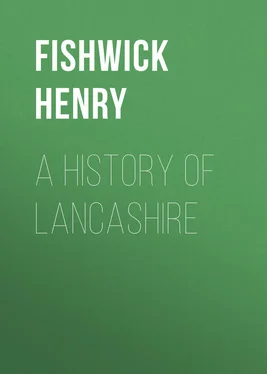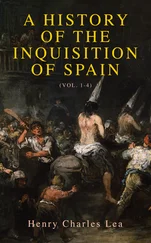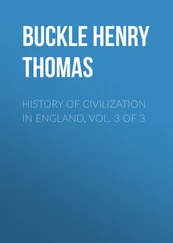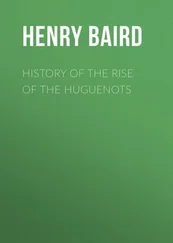Henry Fishwick - A History of Lancashire
Здесь есть возможность читать онлайн «Henry Fishwick - A History of Lancashire» — ознакомительный отрывок электронной книги совершенно бесплатно, а после прочтения отрывка купить полную версию. В некоторых случаях можно слушать аудио, скачать через торрент в формате fb2 и присутствует краткое содержание. Жанр: foreign_antique, foreign_prose, на английском языке. Описание произведения, (предисловие) а так же отзывы посетителей доступны на портале библиотеки ЛибКат.
- Название:A History of Lancashire
- Автор:
- Жанр:
- Год:неизвестен
- ISBN:нет данных
- Рейтинг книги:4 / 5. Голосов: 1
-
Избранное:Добавить в избранное
- Отзывы:
-
Ваша оценка:
- 80
- 1
- 2
- 3
- 4
- 5
A History of Lancashire: краткое содержание, описание и аннотация
Предлагаем к чтению аннотацию, описание, краткое содержание или предисловие (зависит от того, что написал сам автор книги «A History of Lancashire»). Если вы не нашли необходимую информацию о книге — напишите в комментариях, мы постараемся отыскать её.
A History of Lancashire — читать онлайн ознакомительный отрывок
Ниже представлен текст книги, разбитый по страницам. Система сохранения места последней прочитанной страницы, позволяет с удобством читать онлайн бесплатно книгу «A History of Lancashire», без необходимости каждый раз заново искать на чём Вы остановились. Поставьте закладку, и сможете в любой момент перейти на страницу, на которой закончили чтение.
Интервал:
Закладка:
Henry Fishwick
A History of Lancashire
The enormous amount of material, printed and in manuscript, which is available for a History of Lancashire, makes the writing of a popular work on that subject by no means an easy task; indeed, when first mentioned to me, I thought it was almost impossible, by any process of selection, to produce within the compass of an ordinary octavo volume such a book as would be a popular history, and yet not fail to present a faithful picture of the county.
However, I have made the attempt, and in accomplishing the task I must have necessarily left out much which many readers would prefer should have been inserted; but I trust that I have not inserted what some would wish I had omitted. I have endeavoured to confine myself as far as possible to the history of the county as a whole, and have not allowed myself to go into personal or local details except when such were required to illustrate the subject in hand. Of the large army of Lancashire authors and celebrities I have said nothing, as strictly speaking personal notices belong rather to biography than history; and if it were not so, I may, I think, stand excused, as to have merely given their names would have well–nigh filled the volume.
In making my selection of materials from the almost inexhaustible stores at my disposal, I have rejected everything which in my opinion is not capable of being well authenticated. In a work of this character it is not desirable to encumber the text with the very large number of references to authorities which otherwise might be required. The reader, however, may rest assured that I have in no case drawn on my imagination for my facts, neither have I accepted the statements of others without first satisfying myself that those statements are trustworthy and reliable.
Henry Fishwick.The Heights,
Rochdale.
CHAPTER I
INTRODUCTORY
Lancashire, on its south and south–east, is bounded by the county of Chester, the division for about 50 miles, i. e. , from Stockport to Liverpool, being the river Mersey; on the west is the Irish Sea; on the east, up to Graygarth Fell, in the parish of Tunstall, lies Yorkshire; from thence to the waters of Morecambe Bay the boundary is formed by Yorkshire and Westmorland; across the bay is a portion of Lonsdale hundred (north of the Sands), which is almost surrounded by the counties of Westmorland and Cumberland, the extreme eastern boundary being formed by a portion of Windermere Lake. Lancashire from north–west to south–east measures 86 miles, and it is 45 miles across at its widest part; it contains 1,219,221 acres. It has within it 69 parishes (exclusive of 9 extra–parochial districts), 446 townships, and 16 Parliamentary cities and boroughs, which return 35 members, the county divisions adding 23 to this number.
The great divisions of the county are the six hundreds of Lonsdale (north and south of the Sands), Amounderness, Leyland, Blackburn, Salford, and West Derby.
Lonsdale north of the Sands is situate in the extreme north of Lancashire, and is the most picturesque portion of the county, as it embraces a portion of the well–known Lake District; its highest mountain is the Old Man, near Coniston Water, which is 2,577 feet above the sea–level.
The two subdivisions of Lonsdale north of the Sands are Furness and Cartmel. The former is the larger district: its chief towns are Barrow, Ulverston, and Dalton; in the latter there is not a single town of any considerable size or importance. Barrow–in–Furness is one of those towns which the enterprise of the latter half of the present century has suddenly created. A few years ago it was scarcely a village; it is now an incorporated borough, and not only does a large business in iron, but is a port of some importance. With this exception, and a few iron mines, almost the whole district is agricultural in its character.
Furness Abbey, Coniston Priory, and Cartmel Priory were all located in the southern end of this part of the county.
Lonsdale south of the Sands is also chiefly an agricultural district, and is, compared with some other parts of the county, but thinly populated; here and there tall factory chimneys may be seen, but, except in the neighbourhood of Lancaster, they are few and far between.
Time–honoured Lancaster, with its castle and priory, form the central historic point of interest in this part of the hundred; here also were five of the largest forests in Lancashire – Wyersdale, Quernmoor, Bleasdale, Myerscough, and Fulwood. Coming south of Lonsdale, the county is much wider, and is divided longitudinally; the western portion, as far as the river Ribble, forming the hundred of Amounderness, which, like the more northern parts, is inhabited by people engaged in the cultivation of the soil, except in and immediately around the town of Preston, which is now one of the great centres of the cotton trade. The parishes of Kirkham, Garstang, St. Michael’s–on–Wyre, Lytham, Bispham and Poulton are all in a district long known as the Fylde, and their respective churches are all of antiquarian interest. Preston is now by far the largest town in the division; the manufacture of cotton was introduced here in 1777, and the trade has since developed to very large proportions. Here were two religious houses, one a convent of Grey Friars, and the other a hospital for lepers. The Ribble, in its course from Mitton to Preston, intersects the county. To the east of Amounderness is the hundred of Blackburn, which, although it is twenty–four miles in length, only contains five parishes; its north–western extremity is more or less agricultural, but the rest of it is densely populated, and has become a great manufacturing district.
Blackburn, Burnley, Accrington, and several other towns in the district, are all engaged in the staple trade of the county. Clitheroe Castle, Whalley Abbey, and Ribchester are in this hundred.
The south bank of the Ribble forms the western boundary of the hundred of Leyland. The only market–town in the division is Chorley, which until 1793 formed a part of the parish of Croston; like so many other towns of Lancashire, it rose out of obscurity through the introduction of spinning mills towards the end of the last century, and it is now a town of considerable size and importance; in addition to its cotton–mills, coal, stone, and iron are found and worked in the neighbourhood. At Penwortham, on the bank of the Ribble, was a priory dedicated to St. Mary.
The ancient parish churches of Croston, Leyland, Eccleston, and Standish are all of historic interest.
The hundred of Salford has now an enormous population, and the very names of its principal towns call up a vision of tall factory chimneys, dense smoke, and the noise of machinery; manufactories of every kind abound, and it is not saying too much to add that few industries are unrepresented, coal, stone, iron, cotton and woollens, however, constituting the chief trade.
The city of Manchester and the boroughs of Salford, Oldham, Bolton, Rochdale, and Bury are all well–known names in the textile or mechanical world.
West Derby hundred completes the county. This was in Saxon times called Derbei, and was a recognised division; the river Mersey on the one side, and the Irish Sea on the other, have not a little contributed to render this one of the most important districts in England. Liverpool, with its miles of docks and its connection with every part of the world, has become the recognised second port in the country. In the north–east corner of West Derby are the extensive coalfields of Wigan.
A considerable portion of the hundred is as yet untainted with the smoke of the manufactory. Many of the parish churches are of great antiquity; amongst them may be named Ormskirk, Leigh, Wigan, Winwick, Warrington, Childwall, Walton–on–the–Hill, Prescot, Sephton and Huyton. Burscough Priory was in the parish of Ormskirk, and Liverpool had its ancient castle.
Читать дальшеИнтервал:
Закладка:
Похожие книги на «A History of Lancashire»
Представляем Вашему вниманию похожие книги на «A History of Lancashire» списком для выбора. Мы отобрали схожую по названию и смыслу литературу в надежде предоставить читателям больше вариантов отыскать новые, интересные, ещё непрочитанные произведения.
Обсуждение, отзывы о книге «A History of Lancashire» и просто собственные мнения читателей. Оставьте ваши комментарии, напишите, что Вы думаете о произведении, его смысле или главных героях. Укажите что конкретно понравилось, а что нет, и почему Вы так считаете.












